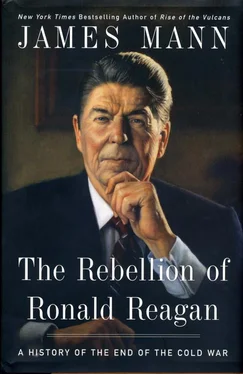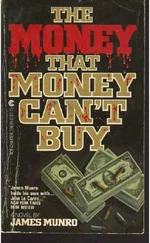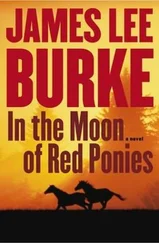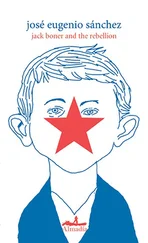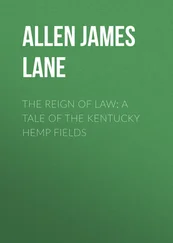The first session was between Reagan and Gorbachev themselves, without Shultz, Shevardnadze, or any other senior officials. Reagan presented Gorbachev with the cuff links. The two men sat in the Oval Office with translators at their backs and American and Soviet notetakers jotting down what the two leaders were saying. After welcoming Gorbachev, Reagan quickly brought up the question of human rights in the Soviet Union. In particular, Reagan wanted to know why Soviet authorities could not lift the continuing restrictions on Jewish emigration.
As Reagan continued to speak, Gorbachev turned to his translator and muttered, “Ohn boltayet yeschchyo” (“He’s blathering on again”). When it was his turn, the Soviet leader pointed out that the United States maintained a well-guarded border with Mexico and had plans to build an extensive system of fences to make sure Mexicans did not cross. If it was acceptable for the United States to restrict immigration, Gorbachev asked, then why wasn’t it permissible for the Soviet Union to impose limits on emigration?
As Gorbachev spoke, Reagan looked at the American notetaker, Fritz Ermarth, the Soviet specialist on the National Security Council. “He doesn’t get it, does he?” Reagan whispered. 1Then, turning to the Soviet leader, Reagan countered that there was a difference between a fence designed to keep people out of a country and one to keep them in. The Mexicans who sought to cross the border were attracted by the economic opportunities in the United States, Reagan said. That was not the same as holding people who wanted to leave inside a country.
The exchange over human rights was relatively brief. At one point, Gorbachev felt compelled to warn Reagan, “Mr. President, you are not a prosecutor and I am not on trial here.” The two men had had these debates before, and expected to have them again. After a few minutes, they decided to move on to other subjects. Both agreed that they had made great progress in improving relations since their first meeting in Geneva—sometimes, Gorbachev noted, by “pounding their firsts on the table” in Washington and Moscow to keep their own bureaucrats in line. 2
At their next session, Reagan performed so poorly that his own aides were taken aback. He and Gorbachev held afternoon talks in the Cabinet Room of the White House, surrounded by virtually all the American and Soviet officials involved in the summit: cabinet secretaries, ministers, national security aides—thirty-four people in all. Gorbachev opened with a broad overview of the situation inside the Soviet Union: what his economic reform program was trying to do and what he planned. He began to talk about the arms-control issues pending between the two countries; Shultz took the lead role in responding to him. Reagan remained quiet for a time, then finally seized the floor with a digression about the general importance of allowing people to run their own lives. He summoned forth one of his jokes about life in the Soviet Union: An American scholar about to fly from the United States to Moscow found that his cab driver to the airport was a student. He asked what the young man wanted to do after school. “I haven’t decided yet,” the driver replied. Upon landing in Moscow, the professor discovered that his Russian cab driver was also a student and asked the same question. “They haven’t told me yet,” said the Soviet cab driver.
The story fell flat. Powell, who was sitting next to the president, later wrote, “As Reagan finished the story, the Americans wanted to disappear under the table, while Gorbachev stared straight ahead, expressionless.” The Soviet Union was a country rich in anecdotes, he told Reagan. Shultz broke in to say the working groups of American and Soviet experts were ready to start their talks. 3
Reagan recorded in his diary that this large afternoon session was “not nearly as good a meeting as this morning’s.” 4That was an understatement. His secretary of state and his national security adviser were so dismayed by Reagan’s performance that both wrote about it in their memoirs. Powell blamed Shultz for having asked on short notice to enlarge the meeting and move it to the large Cabinet Room. “Sudden changes threw Ronald Reagan off his form,” Powell explained.
After the session broke up, Shultz, Powell, and White House chief of staff Howard Baker went back to the Oval Office. “Mr. President, that was a disaster,” the secretary of state told the president. “You can’t just sit there telling jokes.” Shultz agreed with Powell that there would be no more formal sessions in the Cabinet Room; Reagan would meet Gorbachev either in the Oval Office or in another smaller setting with fewer officials. Powell ordered his staff to stay up all night writing and rewriting talking points for the president to use in the next talks with Gorbachev the following morning.
On the second day, Reagan recovered. Before meeting Gorbachev, he spent a half hour carefully going over the talking points the National Security Council staff had drafted for him overnight. Sitting opposite Gorbachev in the Oval Office with Shultz, Powell, and Carlucci at his side, Reagan traced through the American positions. He and Gorbachev talked about how to follow up the treaty banning intermediate-range missiles in Europe with another sweeping agreement that would cut intercontinental missiles by half. The two leaders continued to disagree over Gorbachev’s desire for limits on Reagan’s Strategic Defense Initiative. They bickered over the terms for the Soviet Union’s withdrawal of forces from Afghanistan. While most of this discussion was serious, the president also couldn’t resist telling a few more jokes about the Soviet Union. (Reagan himself later wrote that Gorbachev “howled” at these jokes, although none of the other participants seem to remember this.) After two hours, Reagan and Gorbachev agreed that their aides would continue to negotiate, and the meeting broke up. 5
American and Soviet teams met day and night to draft the joint statement the two governments planned to issue. The haggling went on until the last hours of the summit. Soviet officials were trying to win an American commitment to a ceiling of 5,100 ballistic missiles; the United States wanted 4,800. Finally, Carlucci proposed to Akhromeyev a figure of 4,900; the Soviet marshal agreed, and Gorbachev went along with the compromise. Soviet and American officials smoothed over their disagreements about the Strategic Defense Initiative with language that each side subsequently interpreted in a different way. 6
The significance of this summit did not lie in the nuances of arms control. Indeed, Reagan and Gorbachev made less headway on those issues in their talks at the White House than they had in Reykjavik the previous year. Rather, the Washington summit was a milestone for its ceremony, symbolism, and public impact. The event dramatized to the American public, in a way that no other event had, that the Cold War was subsiding. American politicians recognized that the public’s response to Gorbachev’s visit was overwhelmingly positive. In all of this, Reagan led the way. When it came to shaping the public mood, particularly about the Cold War, he was the driving force for his own administration. He had pushed hard to have a summit with Gorbachev in Washington, recognizing that it would be more than simply another round of high-level diplomacy.
This was the first Reagan-Gorbachev summit held not on neutral ground, but in the capital city of one of the two superpowers. In Washington, it was treated as a state visit. When Gorbachev arrived at the White House, he was greeted with ceremonies on the South Lawn that included a twenty-one-gun salute. Outside the White House along Pennsylvania Avenue, American flags were hung side by side with those of the Soviet Union, each Soviet flag an expanse of bright red surrounding a yellow hammer and sickle.
Читать дальше
